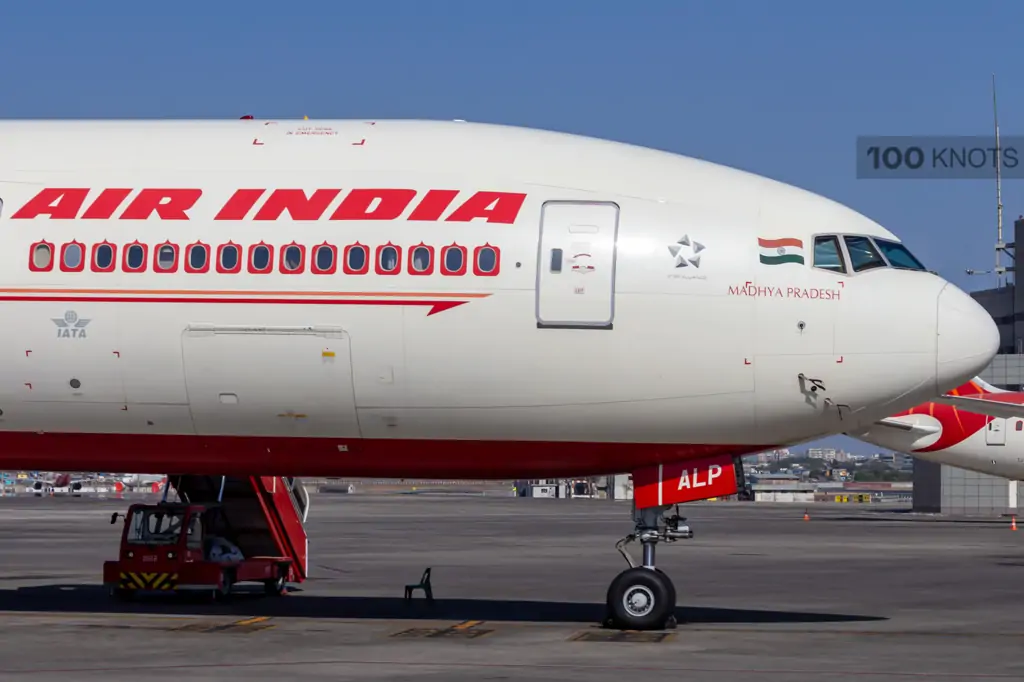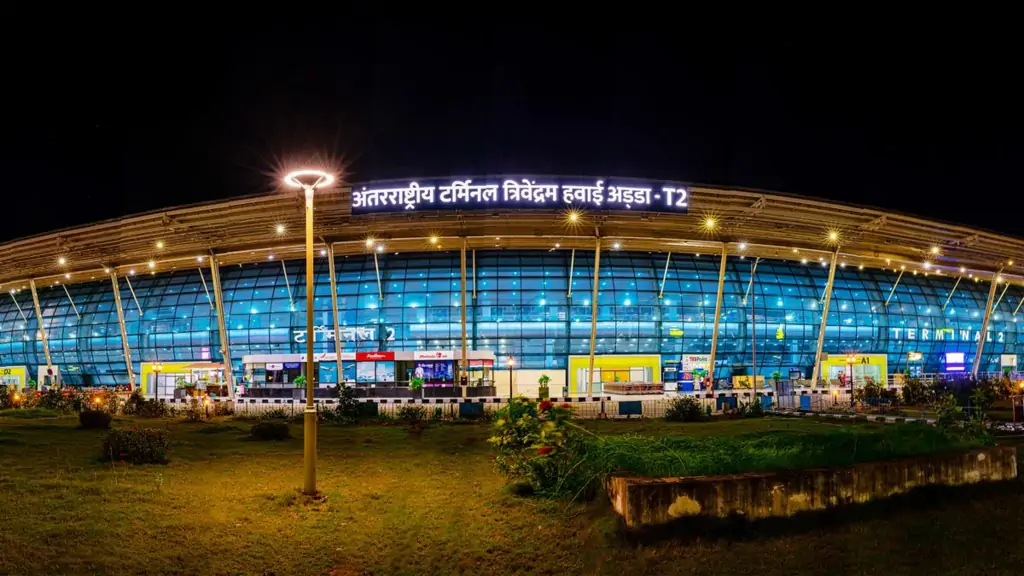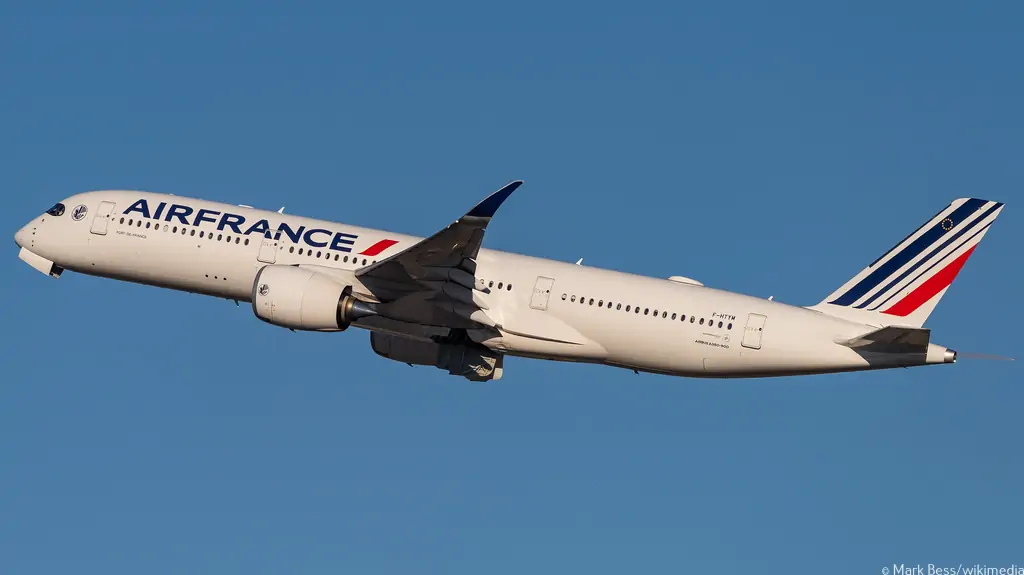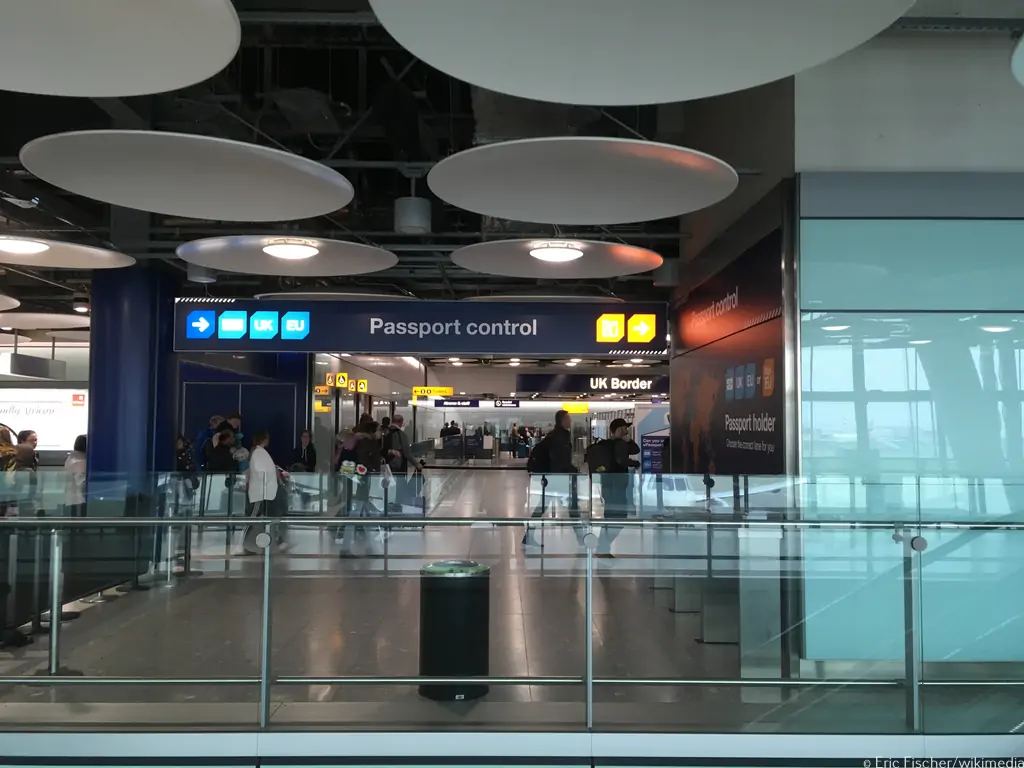Air India Plans to Induct A350 by Year End; Keep Hiring 550 cabin crew & 50 pilots every month
Radhika Bansal
30 May 2023

Bullish on growth prospects with a "healthy start" to Air India's five-year transformation plan, its chief Campbell Wilson said the airline is hiring 550 cabin crew members and 50 pilots every month and also expects to have six wide-body A350 planes in its fleet by the end of this year. After taking over the reins from the government in January last year, Tata Group has put in place various measures to turn around the fortunes of the loss-making carrier, including placing the largest order for 470 planes and expanding international operations.
Talking about the airline's hiring plans, Mr Wilson, who is the Managing Director and CEO, said there is no target per se, but about 550 cabin crew members and 50 pilots are coming in and trained afresh every month. "In the case of cabin crew members, it is about ten times and in the case of pilots, it is about five times on an annual rate of the pre-privatised airline," he told PTI in an interview in the national capital.
According to him, this pace of hiring will continue for most of this year, taper off by the end of this year and accelerate again towards the end of 2024. "It (hiring pace) will match the induction of aircraft".
Against the backdrop of merging Air India Express and AirAsia India (now known as AIX Connect), and Vistara with Air India, Mr Wilson said they are also sensitive to the consolidation subject to regulatory approvals. "There are people, and (they) can fill in the roles. We are calibrating on who we are bringing in from outside in accordance with who exists with the four airlines... we are consolidating the airlines and growing substantially," he said.
On what could be the staff strength putting all the four airlines together, Mr Wilson said it would be around 20,000, excluding those being hired as part of the growth strategy. Earlier this month, Mr Wilson told employees that Air India and Air India Express have hired more than 3,900 people, including over 500 pilots and 2,400 cabin crew members, since the start of this year.
Aircraft Deliveries in Line
"The first narrow-body aircraft will come around July or August. The first wide-body aircraft (A350) will come around October," Mr Wilson said about the induction plans from the historic order placed for 470 planes earlier this year. Currently, Air India has 122 planes and is expanding its fleet. The airline expects to have six A350 and eight B777 aircraft by the end of this year. So far, the carrier has taken 9 B777 planes on lease.
In February, Air India announced that it would buy 250 aircraft, including 40 wide-body A350 planes, from European aviation major Airbus and 220 planes from US aircraft maker Boeing under separate deals. The order comprises 40 Airbus A350s, 20 Boeing 787s and 10 Boeing 777-9s wide-body aircraft as well as 210 Airbus A320/321 Neos and 190 Boeing 737 MAX single-aisle aircraft. According to the Air India chief, the true transformation will happen from next year onwards as it will get all the leased aircraft, start retrofitting old aircraft and deliveries from orders for 470 planes.
On the challenges ahead, Mr Wilson said it will be the sheer scale and pace of change as the airline was under-invested for quite some years. "So, the transformation that the main airline needs is significant. It is also merging the airlines... building training capacity and supporting the unprecedented growth path from a standing start," he added.
About the domestic industry, he said, "We all want a healthy, growing and stable ecosystem that is good for the consumers, economy, travellers, airlines, staff..." A repeated cycle of failures is not good for all of the stakeholders. So, that is a natural evolution and it has happened elsewhere too, he added. Regarding the ongoing five-year transformation plan ‘Vihaan.AI', he said it has been a healthy start.
On wet leasing of aircraft by airlines, Mr Wilson said it is a short-term measure to allow supply and demand to be in balance. "In the short term, it is a perfectly reasonable thing. In the long term, I think, we need to be careful that it does not undercut the incentive to invest in your own assets and put the skin in the game to grow the market... in a sustainable way," he noted. IndiGo has taken aircraft on a wet lease as part of expanding its international presence.
New Interiors of Air India Aircraft
“We will induct 19 new wide-body aircraft by the end of next March. These new planes will get onboard WiFi first. From mid-2024 we will start sending our 40 existing wide-body (27 Boeing 787s and 13 B777s) for a complete refurbishment. Their interiors will be scrapped and they will get everything brand new from seats to inflight entrainment (IFE) and onboard Wifi as part of our USD 400 million upgrade project. By mid-2025, all our twin aisles will have absolutely new cabin products,” Campbell Wilson said in an interview with The Times of India.
While 17 of the 19 twin aisles will be used for augmenting the fleet, Air India has recently started talks for indicting two more B777s so that it can retire two wide-bodies. A majority of Air India group’s full-service single aisles will also get a complete makeover by next September. “We are going to induct 50 single aisles this fiscal. By September 2024, 75-80% of our full-service single aisles will be brand new,” he said. The remaining 20-25% will be refurbished for being used by the low-cost arm, AI Express. This means in the next two years, AI full-service arm planes would have completely new interiors.
Meanwhile, Air India has also begun reinstating six of the 47 weekly non-stop flights to the United States that were temporarily suspended this March due to a shortage of B777 crew. “We are reinstating three of those flights this month and the remaining three next month. We are now hiring five and 10 times more pilots and cabin crew per month than last year. We are hiring 600 crew (550 cabin crew and 50 pilots) every month,” Wilson, who was selected managing director-chief executive officer by Tata Group last May, said.
Air India’s Transformation
After the acquisition, Tata Group, on September 15, 2022, unveiled the transformation plan ‘Vihaan.AI’, which set time-bound transformation milestones to establish Air India as a world-class airline. As part of the plan, Air India, over the next 5 years, will strive to increase its market share to at least 30% in the domestic market while significantly growing the international routes from the present market share. Vihaan.AI focuses on five key pillars, exceptional customer experience, robust operations, industry-best talent, industry leadership, and commercial efficiency and profitability.
First Phase
'Taxi', the first phase of the transformation plan Vihaan.AI, which focussed on "addressing legacy issues of the airline at scale and laying the foundation for future growth," has concluded, the airline said and added that now the second phase 'Take Off', -- that will focus on developing the platforms, processes, and systems needed to build toward excellence -- has commenced. In this phase, Air India is expected to complete the consolidation of its airline business, develop a world-class institute for training and build on the momentum seen in the first phase. Air India CEO and MD Campbell Wilson said the first six months of the transformation journey had made great strides in tackling many issues that had built up over the years, and the airline has come a long way in establishing foundations for growth. He further stated that -
"The first six months of our transformation journey have engaged and united Air Indians behind a common cause, and made great strides in tackling many issues that had built up over the years. Our record-setting aircraft order, the commitment of USD 400 million to completely refurbish existing aircraft, the investment of USD 200 million in new IT, and the recruitment of literally thousands of staff are but a few of the significant investments being made to restore Air India to the upper echelons of global aviation. As we move into our Take Off phase, we will start seeing these investments bear fruit."
Second Phase
The second phase will also witness the consolidation of AirAsia India and Air India Express; the Low-Cost Carrier (LCC) entity has already merged their core reservations platforms, websites, and customer-facing systems. "Vistara will also be merged with Air India following the grant of regulatory approval. The release said that developing a world-class training academy will also take shape as the future direction and configuration of the airline's line and base maintenance," the release said. Apart from launching premium economy seats for the first time on select long-haul flights, Air India has revamped its menus on international and domestic routes. The airline also rolled out over 29 new policies across employees to improve welfare, designed new remuneration programs for legacy staff, and "onboarded more than 3,800+ employees across crew and other functions to support capability and growth," the release said.
The airline rolled out a new organizational structure and revamped roles across levels with a conscious effort to address the disparities between permanent and full-term contract employees. It also introduced over 29 new employee policies to improve welfare and two new training programs, Saksham and ACE, to upskill staff and improve service. Not only that, the airline onboarded more than 3800+ employees across crew and other functions to support capability and growth.
Read next
Thiruvananthapuram International Airport Introduces 6 E-Gates for Smooth Check-In
Radhika Bansal
29 May 2023

Thiruvananthapuram International Airport has been experiencing significant transformations since its acquisition by the Adani Group. To develop a technologically advanced ecosystem that will offer a seamless, consistent and paperless service experience, the International Airport here has introduced the advanced e-gate system to facilitate the journey of passengers. After checking in, passengers can enter the Security Holding Area (SHA) by scanning their boarding pass at the e-gates, the Airport authority has said. This new system replaces the previous practice of officials manually checking the boarding pass and granting admission. The implementation of e-gates promises smoother entry for passengers, reducing waiting times and minimizing queues, particularly during peak hours.
"Six e-gates with QR code scanners have been installed in the pre-security hold area of the airport's domestic and international terminals. Earlier, the officials used to directly check the boarding pass and admit the passengers," the airport authority said in a release. With the introduction of e-Gate, passengers will be able to speed up the check-in process and avoid long queues during peak hours, it said. E-gates will help airlines quickly locate passengers within the terminal and improve airport security, it added. Moreover, the enhanced security features contribute to improving overall airport safety.
This initiative aligns with the Adani Group's vision of creating a technologically advanced ecosystem that delivers a seamless, consistent, and paperless service experience. By introducing innovations like e-gates with QR code scanners, the airport aims to offer passengers greater convenience and efficiency while adhering to modern standards.
Technology integration in airport operations is becoming increasingly crucial, as it enhances the overall passenger experience and improves operational efficiency. With the introduction of e-gates, Thiruvananthapuram International Airport takes a significant step towards embracing this trend. The Adani Group's commitment to developing a technologically advanced infrastructure reflects its dedication to creating a world-class airport that caters to the evolving needs and expectations of travellers.
As the airport continues to transform the Adani Group's ownership, passengers can anticipate further advancements aimed at enhancing their travel experience. From seamless check-ins to advanced security measures, the airport's modernization efforts seek to position Thiruvananthapuram International Airport as a hub of efficiency, convenience, and technological excellence.
The contactless e-gates, empowered by touchless technologies and boarding card scanners, allow passengers to flash their physical or e-boarding cards and verify their flight details. After the verification process at the e-gates, the air travellers can proceed to security checks. Passengers carrying wide luggage or reduced mobility (PRM) can pass through it easily, and those carrying only hand baggage can walk through the normal lane e-gates.
About Thiruvananthapuram International Airport
Thiruvananthapuram International Airport is an international airport which serves Thiruvananthapuram, the capital city of Kerala, India. Established in 1932, it is the first airport in the state of Kerala and the fifth international airport of India, officially declared in 1991. It is the operating base of Air India, Air India Express, IndiGo and SpiceJet. It is spread over an area of 700 acres. The airport is the eighth busiest airport in India in terms of international traffic and the twenty-second–most active overall. In the fiscal year 2022–23, the airport handled around 3.5 million passengers, with a total of around 25,000 aircraft movements.
In addition to civil operations, the airport headquarters the Southern Air Command (India) of the Indian Air Force (IAF) and the Indian Coast Guard for their operations. IAF have an exclusive apron to handle all their operations. Thiruvananthapuram Airport also caters to the Rajiv Gandhi Academy for Aviation Technology which carries out pilot training activities. The airport hosts Air India's Narrow body Maintenance, repair and overhaul unit – MRO consisting of twin hangars for servicing Boeing 737 type aircraft, servicing mostly Air India Express aircraft.
AAI signed a letter of agreement with Adani in September 2020. Adani Thiruvananthapuram International Airport Limited (ATIAL), floated by the Adani Group to run the airport, would operate, manage and develop the airport for a period of fifty years. As per the agreement, ATIAL would get control of the airport only after a concession agreement was executed and the performance bank guarantee was paid and subject to clearance of legal hurdles.
Read next
Qantas, one of Australia's leading airlines, is set to bid farewell to its Boeing 717 aircraft, signaling the end of an era in Australian aviation. For many years, these iconic aircraft have played an important part in QantasLink's regional operations. The Boeing 717s will be gradually replaced with the more fuel-efficient and modern Airbus A220 aircraft as part of the ambitious "Project Winton" fleet renewal programme.
Boeing 717 Jets of Qantas: A Legacy in Australian Aviation
Australia's First Boeing 717
The Boeing 717 is significant in Australian aviation history since it was the first of its kind to be registered and operated in the country. Its inclusion in the Qantas fleet heralded a new era in regional air transport. Because of the aircraft's strong structure, efficiency, and adaptability for short-haul flights, it was a suitable option for QantasLink's operations.
The Boeing 717 fleet of QantasLink
QantasLink has established a fleet of 20 Boeing 717 aircraft over the years, servicing various rural locations around Australia. These aircraft have served as the network's backbone, providing dependable and efficient service to customers travelling to smaller airports and regional centres.
The Boeing 717's Role in Qantas Operations
The Boeing 717 has played an important part in Qantas' operations, swiftly and pleasantly transporting passengers from large cities to remote locations. Because of its short take-off and landing capabilities, as well as its ability to operate from smaller airports, it has proven to be a great asset for QantasLink.
Current Scenario
The departing 717 (registered VH-NXI) has a particular role in the Qantas Group's contemporary history, having flown Jetstar's first trip between Melbourne and Launceston in May 2004. For the past 15 years, the aircraft has also flown on regional and domestic routes for QantasLink. Over the last two decades, it has completed over 29,000 flights and securely transported over 1.6 million passengers for both Qantas and Jetstar.
The Qantas Group has recovered to about 100% of pre-COVID domestic flying levels through a combination of new arrivals and standby aircraft returning to service, and it intends to restore 100% of international flying by March 2024.
Transitioning to the Airbus A220
Qantas has chosen the Airbus A220 as the replacement for the Boeing 717 as part of Project Winton. The A220 is a cutting-edge aircraft recognized for its fuel economy, range, and passenger comfort. The transfer from the Boeing 717 to the A220 will be gradual, guaranteeing the new aircraft's flawless integration into QantasLink's operations.
Benefits of the Airbus A220
The Airbus A220 provides several advantages to QantasLink and its passengers. For starters, it saves far more gasoline than its predecessor, lowering both running expenses and the environmental impact. The sophisticated aerodynamics and efficient engines of the aeroplane contribute to its outstanding fuel economy.
The Arrival of the A321XLR
Aside from the A220, Qantas is looking forward to the arrival of the A321XLR, a long-range variant of the Airbus A321. This aircraft will enable nonstop flights to more distant regional locations, greatly expanding QantasLink's capabilities. The A321XLR's improved range and efficiency make it ideal for Qantas' expanding network.
Qantas' and its Passengers' Reactions to Fleet Renewal
Improved Passenger Experience
QantasLink hopes to improve the customer experience with the arrival of the Airbus A220 and A321XLR. Passengers will have a pleasant and memorable flight thanks to the contemporary interiors, comfy seats, and superior in-flight entertainment systems.
Environmental Sustainability
Fleet renewal is critical to Qantas' goal of lowering its environmental footprint. The A220 and A321XLR's fuel economy will dramatically cut carbon emissions, contributing to a more sustainable aviation sector.
Cost Efficiency and Operational Benefits
Qantas will also benefit from cost savings and improved operational efficiency as a result of the new aircraft. Fuel savings, along with decreased maintenance requirements, will result in lower operational expenses over time. The A321XLR's increased range and flexibility will allow Qantas to optimize its route network and meet the changing needs of regional travellers.
Conclusion
Qantas' decision to retire its Boeing 717 aircraft in favor of the Airbus A220 and A321XLR marks a watershed moment in the airline's history. The shift will not only improve the passenger experience but will also help make regional aviation more sustainable and efficient. Qantas continues to be committed to providing excellent service while embracing technological breakthroughs that influence the future of air travel.
With Inputs from Qantas
Read next
Loyalty programmes have become a vital part of our lives in today's fast-paced environment. Qatar Airways Privilege Club recognizes the importance of providing its members with memorable and rewarding experiences. Privilege Club's launch of Card Linked Offers strives to increase the perks and privileges enjoyed by its devoted members.
Qatar Airways Privilege Club Overview
Qatar Airways Privilege Club is a loyalty programme meant to reward and recognize frequent flyers of the airline. When flying with Qatar Airways or its partner airlines as a Privilege Club member, you may earn Qmiles, the program's loyalty currency. These Qmiles may be redeemed for a wide range of enticing benefits, including aircraft upgrades, hotel stays, vehicle rentals, and much more. Privilege Club members may now earn Avios while going about their daily lives thanks to the introduction of Card Linked Offers.
Card Linked Offers
Qatar Airways Privilege Club is delighted to announce the introduction of Card Linked Offers, a ground-breaking feature. This new feature is designed to transform the way Privilege Club members engage with their loyalty programme, effortlessly incorporating Avios into their daily lives. Members may now earn and spend Avios on their everyday purchases at a variety of retail and leisure partners in Qatar by attaching their Visa or Mastercard credit cards, including those registered in Apple Pay, Google Pay, or Samsung Pay.
"At Qatar Airways, we constantly look towards innovation and ensuring our services are unparalleled in the industry, and our loyalty programme is no different," stated His Excellency Mr. Akbar Al Baker. Privilege Club has experienced several improvements in the previous year, including the introduction of Avios as the rewards currency, and the current Card Linked Offers release just adds to our ongoing improvement plan. "After introducing the ability to collect and spend Avios in our airport, we believe that the addition of the new feature will further solidify the Privilege Club experience as a lifestyle." Our members will notice an amazing selection of incentives while spending and collecting their Avios once the Card Linked Offers debut."
Users may link purchases to the loyalty programme by logging into their Privilege Club account and entering their credit card information. When members complete a transaction at a partner location, they can opt to collect or spend Avios through their account, which will be credited in Avios or the equivalent cashback on their connected card.
Redeeming Avios for Rewards and Benefits
The actual value of Avios is realized when they are redeemed for exciting rewards and bonuses. Qatar Airways Privilege Club provides a wide range of redemption choices, allowing members to pick incentives that best suit their interests and travel goals.
Enhancing the Privilege Club Experience
The addition of Card Linked Offers demonstrates Qatar Airways' commitment to improving the Privilege Club experience. The airline guarantees that loyalty is not restricted to travel-related activities by seamlessly integrating Avios into members' routines.
Conclusion
The introduction of Card Linked Offers by Qatar Airways Privilege Club transforms the reward programme experience. The airline guarantees that loyalty is not limited to flying by incorporating Avios into members' daily lives. Members may earn Avios on regular transactions and access a variety of perks and bonuses with Card Linked Offers. This novel function enriches the Privilege Club experience by forging a stronger bond between members and the airline. Join Qatar Airways Privilege Club today to begin earning Avios for daily activities.
With Inputs from Qatar Airways
Read next
Air France A350 Forced to Land Back in Osaka After Bird Strike Damages Nose Cone
Abhishek Nayar
29 May 2023

While flying is one of the safest methods of transportation, unanticipated mishaps can occur, causing problems for both passengers and crew members. One such event occurred when an Air France flight from Osaka to Paris encountered a bird strike, resulting in a severe scenario that necessitated the flight's return to its departure location.
The Impact of Bird Strikes on Aircraft
Depending on the size and speed of the bird, as well as the location of the hit, bird strikes can inflict varying degrees of damage to aircraft. The bird impact damaged the nose cone of the Airbus A350-900 aircraft in this occurrence. The nose cone, also known as the radome, is an important component that safeguards the weather radar and other equipment placed within it.
Air France Flight AF291: Incident Details
Let us now examine the specifics of Air France flight AF291, which was affected by the bird attack event.
Flight Duration and Route
Air France flight AF291 operates between Osaka and Paris over a distance of roughly 9,000 kilometers. The journey is normally essentially 12 hours, making it a handy alternative for tourists traveling between these two locations.
Declaration of an Emergency and Return to Osaka Kansai Airport
After a bird hit damaged its nose cone earlier today, an Air France flight between Osaka and Paris was forced to return. After the flight deck crew spotted a technical fault with the Airbus A350-900's weather radar and speedometer, AF291 declared an emergency and returned to Osaka Kansai Airport (KIX) less than three hours into its 12-hour journey.
Reactions and Support from Passengers
Naturally, the event created considerable disturbance and anxiety among the passengers on board Air France aircraft AF291. However, the crew conveyed the issue effectively and reassured the passengers of their safety. Airline personnel and ground staff responded quickly, aiding passengers with rebooking, hotels, and any other arrangements necessitated by the aircraft diversion.
Precautions and Countermeasures Against Bird Strikes
Aviation authorities, airports, airlines, and aircraft manufacturers all take safeguards and make efforts to reduce the danger of bird attacks.
Programmes for Airport Bird Control
Airports frequently have specific bird control programmes in place to regulate nearby bird populations. To dissuade birds from breeding or feeding near runways and flight routes, these programmes use a variety of measures, such as habitat alteration, deterrent devices, and bird hazing.
Features of Aircraft Design
Specific design characteristics are used in aircraft to improve bird attack resistance. Reinforced windscreens, stronger materials for leading edges and key regions, and engine bird ingestion avoidance techniques are among them. These design modifications lower the impact of bird strikes and reduce the likelihood of critical damage.
Pilot Procedures and Training
Pilots undergo comprehensive training to deal with emergency scenarios such as bird attacks. They are taught to determine the severity of the impact, examine any damage, and make educated judgements on whether to continue the flight or return to the departure airport. There are standard operating procedures and checklists in place to help pilots deal with such occurrences safely.
Conclusion
The bird strike event that prompted Air France flight AF291 to return shows the necessity of aviation readiness, safety precautions, and good communication. While bird strikes constitute inherent dangers, the aviation industry is always working to reduce these risks through extensive training, airport bird control programmes, improved aircraft design features, and routine maintenance procedures. We can secure safer skies for everybody by better understanding the consequences of bird strikes, taking preventative measures, and encouraging teamwork.
With Inputs from Aviation Safety Network
Read next
Electronic passport gates have become an essential feature of current travel systems in a digital era when technology has revolutionized various aspects of our lives. These automated gates improve efficiency and convenience for travellers by streamlining the passport control process. However, a recent event in the United Kingdom highlighted the possible issues and interruptions that might arise when such systems experience outages.
The Importance of Electronic Passport Gates
E-gates, or electronic passport gates, have transformed the way travelers pass through immigration checkpoints. These automated systems employ biometric technologies to verify individuals' identities and speed up the passport control procedure, such as face recognition and fingerprint scanning. Airports can handle large numbers of people effectively, minimizing queues and wait times, by employing this technology. The introduction of e-gates was a huge innovation in the travel industry, boosting security and the overall travel experience.
Outage at the UK's Electronic Passport Gate
The United Kingdom experienced a national breakdown of its automated passport gates on a fateful Friday evening, creating severe disruption and discomfort for travelers. The e-gates, which were present at all major UK airports, including Heathrow, Gatwick, Manchester, and Stansted, abruptly stopped working, causing substantial delays and a passenger backlog.
Impact on Major UK Airports
The outage had a significant impact on major UK airports, which rely significantly on electronic passport gates' efficiency to handle the steady stream of travelers. Heathrow, the UK's busiest airport, was severely disrupted, with enormous queues stretching through terminals. Airports including Gatwick, Manchester, and Stansted encountered similar difficulties as hundreds of passengers were caught up in the pandemonium produced by the malfunctioning e-gates.
Potential Causes of the Outage
A representative for the Home Office said the cause of the system breakdown was "too sensitive to say" but that the department was working closely with airports to minimize inconvenience. Furthermore, the UK Border Force will deploy additional personnel to ensure that more staffed passport stations are filled.
Response and Mitigation Efforts
Authorities responded promptly to the breakdown of electronic passport gates, deploying additional personnel to assist with manual passport checks and relieve congestion created by the faulty e-gates. Airport personnel worked tirelessly to manage the situation, offering passengers regular updates and counsel. In the meantime, technicians and engineers worked around the clock to resolve the problem and resume normal operations.
Repercussions for Travelers and Airlines
The disruption has serious consequences for both passengers and airlines. Passengers were subjected to extensive delays and missed flights, as well as the annoyance and inconvenience of altered travel arrangements. Airlines were forced to accommodate delayed customers, reschedule flights, and deal with the logistical issues posed by the unexpected increase in passenger traffic. The financial ramifications for airlines, such as compensation claims and increased operating expenses, contributed to the situation's complexity.
Public Reaction and Media Coverage
The news of the electronic passport gate breakdown spread quickly through numerous media channels, with renowned news organizations such as the BBC reporting on the situation. The public reacted with sympathy for the afflicted travellers and irritation at the outage's disturbance. Conversations and concerns flooded social media channels, emphasizing the necessity for sturdy infrastructure and contingency preparations to lessen the effects of such events.
Lessons Learned and Future Preparedness
The nationwide electronic passport gate failure acted as a wake-up call for authorities and airport operators, emphasizing the importance of extensive system maintenance and solid contingency planning. Lessons learned from this terrible event will drive improvements in infrastructure, technology, and emergency response methods, ensuring improved readiness for future difficulties. Collaboration among airport authorities, technology providers, and relevant stakeholders will be critical to improving system dependability while minimizing the impact of outages.
Conclusion
The nationwide electronic passport gate outage in the United Kingdom highlighted the vulnerability and repercussions of technical breakdowns in vital travel systems. Numerous travelers' itineraries were interrupted as a result of the event, generating annoyance and difficulty. The response by authorities and airport personnel, on the other hand, proved their commitment to reducing the situation and restoring normalcy. This tragedy serves as a reminder of the significance of investing in solid contingency preparations and consistently enhancing technology to facilitate seamless travel experiences.
With Inputs from BBC





Comment